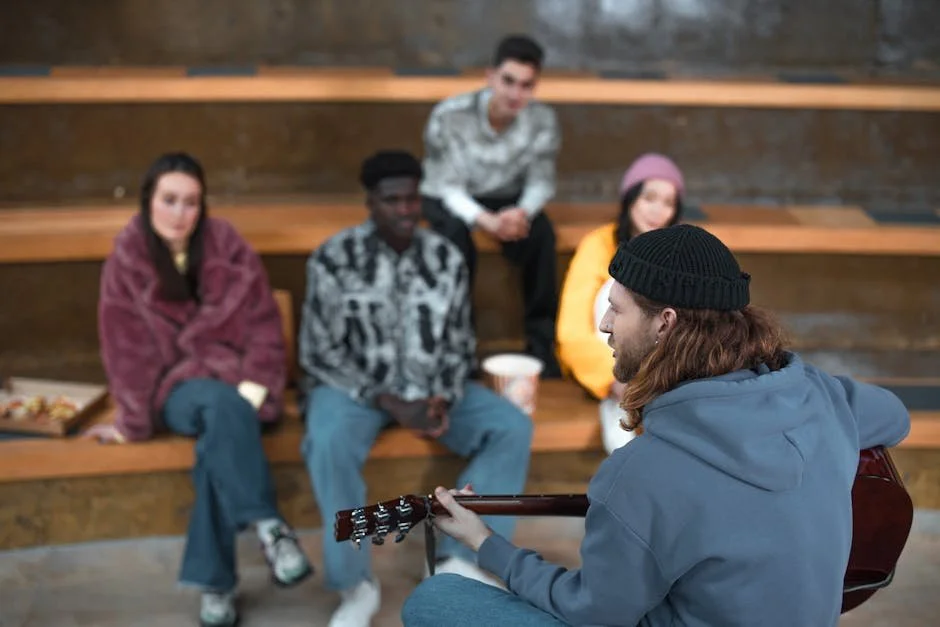Understanding the Different Types of Guitars for Lessons
When choosing a guitar for lessons, it's essential to understand the different types available. Here are the main types you might come across:
Acoustic guitar: Known for its hollow body and sound hole, it's great for beginners due to its simplicity and portability.
Electric guitar: With a solid body and pickups to amplify sound, it's perfect for rock and pop music enthusiasts.
Classical guitar: Recognized by its nylon strings and wider neck, it's ideal for classical and fingerstyle playing.
Each type offers unique features, so consider your music preferences and playing style when selecting the perfect guitar for your lessons.
Factors to Consider When Choosing a Guitar for Lessons
When choosing a guitar for lessons, there are several factors to consider. A key aspect to look at is the type of music you want to play, as different guitars are suitable for various genres. Consider the size of the guitar, especially if you're a beginner, as this can affect your comfort while playing. Additionally, the material of the guitar's body can impact its sound quality, so choose wisely based on your preferences. Lastly, think about your budget, as pricing can vary depending on the brand and features of the guitar.
Electric vs. Acoustic Guitars: Pros and Cons
Electric guitars are typically easier to play for beginners because they have thinner strings which require less strength to press down. Acoustic guitars do not require an amplifier to produce sound, making them more portable and convenient for travel. Electric guitars, on the other hand, offer a wider variety of sound effects through amplifiers and pedals, allowing for more creative experimentation. Acoustic guitars are known for their natural and warm sound, making them ideal for intimate performances or singer-songwriters.
Guitar Sizes: Finding the Right Fit for You
Guitars come in various sizes to accommodate different player heights and preferences. The most common guitar sizes include full-size, three-quarter, and half-size guitars. It's crucial to choose a guitar size that feels comfortable and suits your body proportions to ensure an enjoyable playing experience.
Factors to consider when selecting the right guitar size include your age, physical build, and playing style. It's recommended to try out different sizes at a music store to find the one that feels right for you. A well-fitted guitar will not only enhance your playing ability but also prevent strain and discomfort during practice sessions.
Budgeting for Your Guitar Lessons Instrument
When budgeting for your guitar lessons, it's important to consider the cost of the instrument. A good quality beginner guitar can range from around $100 to $300. Keep in mind that guitars come in different types, such as acoustic, electric, or classical, each with its own price range. Make sure to factor in additional costs like accessories (picks, tuner, etc.) and potential maintenance fees. It's wise to invest in a guitar that suits your learning style and budget, as this will enhance your playing experience.
Testing Guitars: Trying Before You Buy
Before you purchase a guitar, it's important to try it out first. Testing guitars before buying gives you a feel for how it plays and sounds. Listen closely to the tone it produces and pay attention to how comfortable it is to hold. Testing out different guitars allows you to find the perfect fit for your lessons. Also, testing guitars can help you determine if the size and shape suit your playing style. When testing guitars, make sure to check for any buzzing or rattling sounds that could indicate a problem with the instrument.
Online vs. In-Person Guitar Shopping: Which is Better for Lessons
Online guitar shopping offers convenience with a wide variety of options while in-person shopping allows you to physically try out the guitars before buying. When shopping online, you can easily compare prices and read reviews from other buyers. However, in-person shopping gives you the chance to feel the guitar in your hands and hear how it sounds. Physical stores also often have knowledgeable staff who can assist you in finding the right instrument. Consider your preferences and needs when deciding between online and in-person shopping for your guitar lessons.
Guitar Accessories: Essential Gear for Your Lessons
Guitar accessories like a tuner, guitar picks, a strap, and a capo are essential for your lessons. A tuner helps you keep your guitar in tune, picks give you control and help with different styles, a strap helps you play comfortably standing up, and a capo helps you change the key without changing your fingerings.
Maintenance Tips for Your Lesson Guitar
To keep your lesson guitar in top shape, it's important to regularly clean it and change the strings as needed. Wipe down the body and neck of the guitar with a soft cloth to remove any dust or fingerprints. Use a guitar polish to keep it looking shiny. When changing strings, remove them one at a time to avoid putting too much tension on the neck. Remember, well-maintained guitars not only sound better but also last longer.
Conclusion: Finding Your Perfect Guitar for Lessons
Once you have tried out different guitars and considered factors like comfort, sound quality, and your budget, you can make an informed decision on the perfect guitar for your lessons. Whether you opt for an acoustic or electric guitar, ensuring it feels right and sounds good to you is key to your learning and enjoyment. Remember, the best guitar for lessons is ultimately the one that inspires you to pick it up and play.


